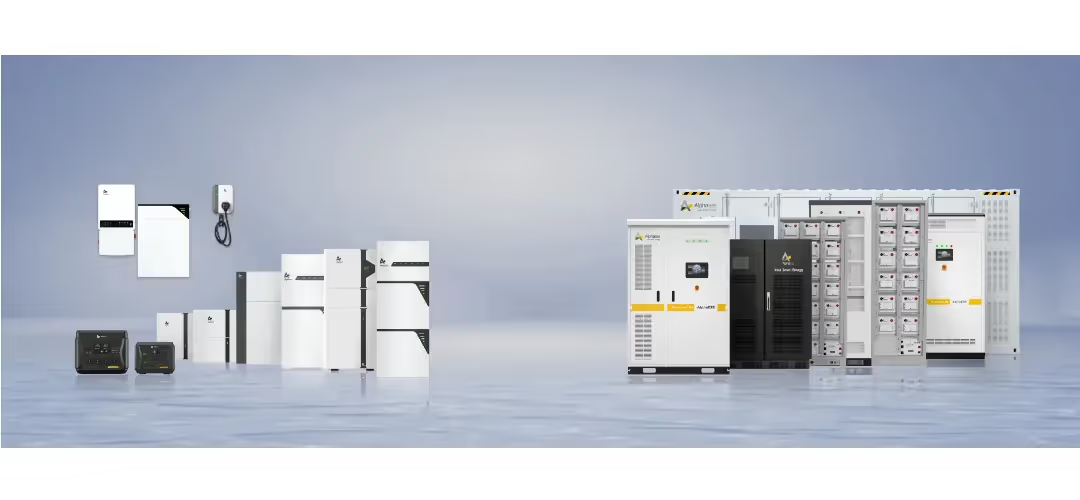
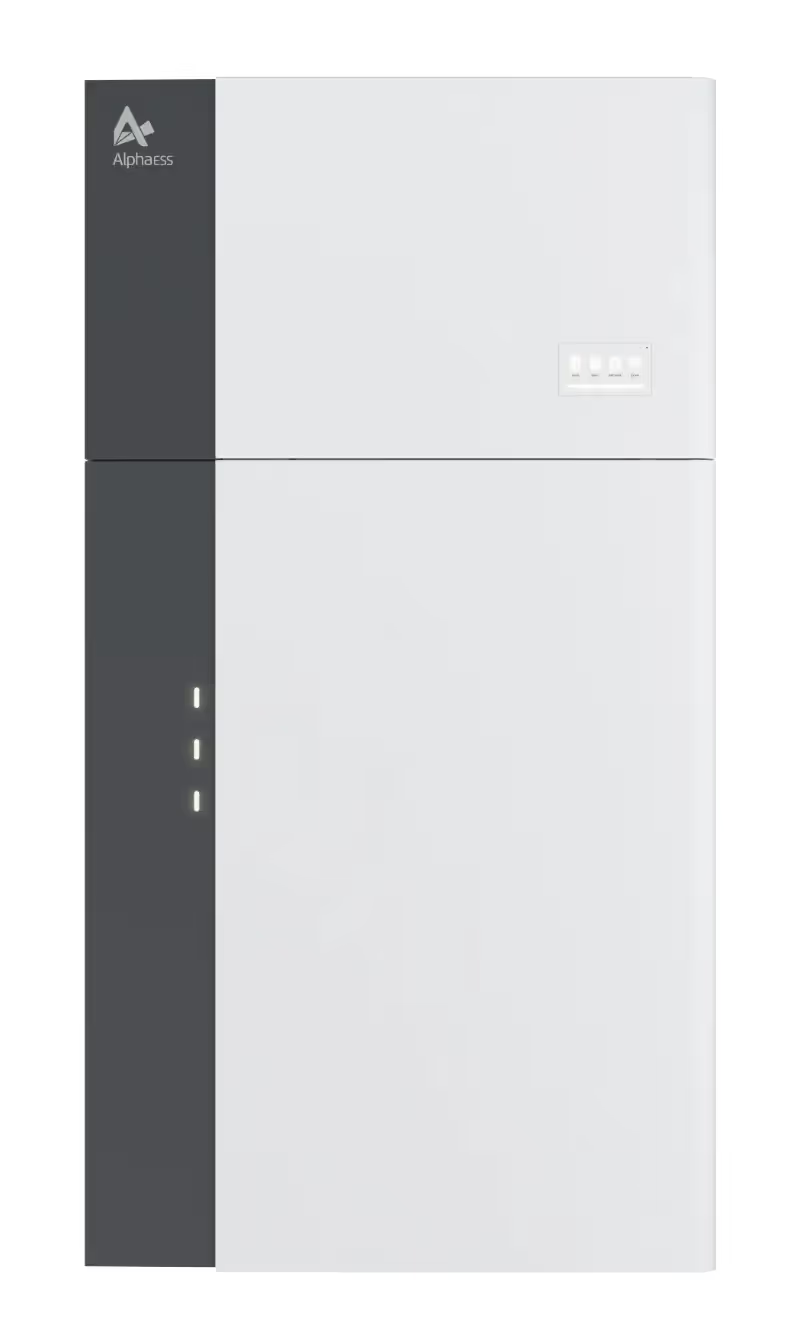
A basic solar panel system will cost approximately £5,893 without a solar battery. Most suppliers offer 3 different battery types. Ours range from £2,000-£4,995 including installation.
Systems without a solar battery are likely to save around £625 per year, but up to £757 per year using a suitable battery. This gives a payback period of 9-14 years; the bigger the battery the longer the payback period.
However, this payback period doesn't account for rising energy costs. Accounting for rising energy costs and with a focus on self sufficiency, a solar battery becomes worth the investment. In addition, using the battery to charge from the grid, like an EV, at cheap time of use tariff rates can dramatically reduce the payback period in months when there isn't much in the way of sunshine.
A solar panel battery is worth it when picking a medium unit at £3,745, offering self sufficiency levels of 70%.
In comparison, using no battery at all would give you a system operating at 24% self sufficiency, so you'll still very much be at the mercy of fluctuating energy costs.
You can play around with our solar panel and battery configuration tool here to get the best balance of cost and self sufficiency for your property.
Solar batteries are expensive and they aren’t necessary for every property. So, it’s worth doing a little digging before investing £1000s into something that you might not actually need…
To determine the cost of your solar storage battery, we’d need to know your exact electricity consumption. Costs vary from supplier to supplier, and the exact cost is going to determine if panels and a solar battery are worth it for your property.
If you know your exact energy consumption, you can use our clickable solar panel and storage battery tool here.
Don’t have your electricity consumption to hand? It’s easy enough to estimate, using Ofgem’s energy consumption table:
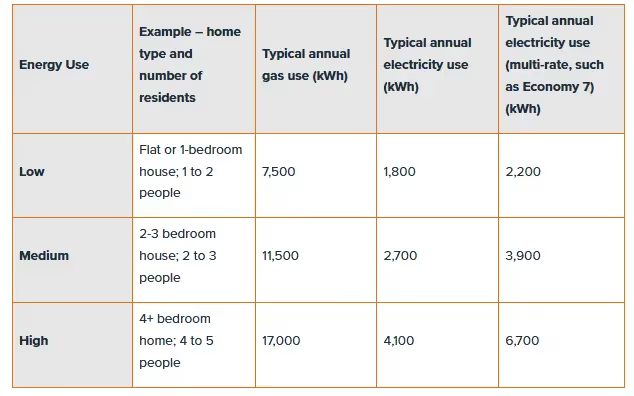
For the sake of this example, we’ll take a high electricity consumption household (4,100kWh per annum).
We put a couple of property details into our solar panel tool here. This tool also completes a roof scan to determine the most suitable system (with or without a battery). The basic system without a battery, is a 5.16kW 12-panel setup at a cost of £5,893.
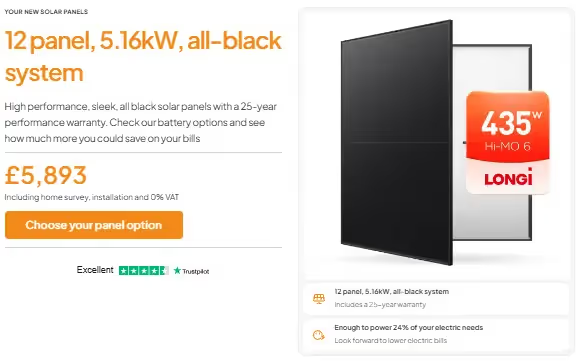
You have 4 options when it comes to solar storage batteries with this system. All of the units below are manufactured by Sunsynk, a leading brand in the solar battery space:
This equates to a total installation cost (panels and battery) of between £5,893-£10,888. A reasonably sized solar storage battery makes up a big chunk of the overall installation cost for solar panel systems.
To determine exactly which system and battery is worth it for your property, use our clickable solar panel tool here.
Let’s face it, one of the main reasons for installing solar panels (with or without a battery), is to save money on your electricity bill.
Using the same system as we mentioned above (£5,893) in a property consuming 4,100 kWh of electricity a year, you’d save approximately £625/yr (using an export rate of 15.24 pence, as offered by Octopus Flux tariff in certain parts of the country).
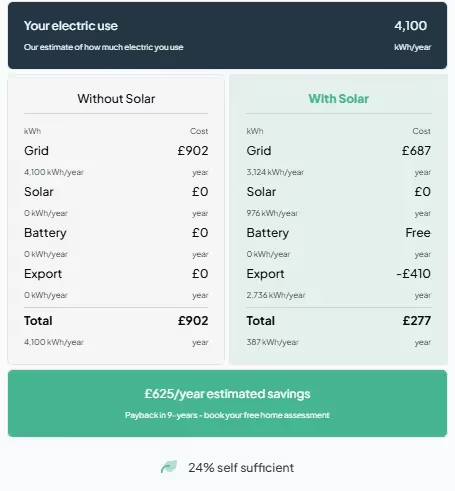
You will need a lot less for electricity from the grid, and use a lot of electricity directly from your solar panels and then be topped up with a payment from the Smart Export Guarantee (SEG).
The SEG is a scheme where you’ll sell any unusable electricity back to the grid. You’ll do this when:
Whether you use a solar battery or not, you’ll want to utilise the Smart Export Guarantee. To be eligible, you’ll need to use a MCS certified solar panel installer.

As you can see, you’ll pay a reasonable sum for a battery. And with the property in question, the bigger the battery, the smaller the gap in terms of actual electricity bill savings.
In this case, we’d suggest going for a small 5.3kW battery. This covers the majority of what’s needed, yet doesn’t cost a fortune (£2,495) so is worth the additional cost.
Each property is different. All of the following affects how much you’ll save on your electricity bills using solar panels such as:
Want to get specifics on how much you could save using solar panels with a storage battery and if it's really worth it? Use our clickable 2-minute solar panel tool here.
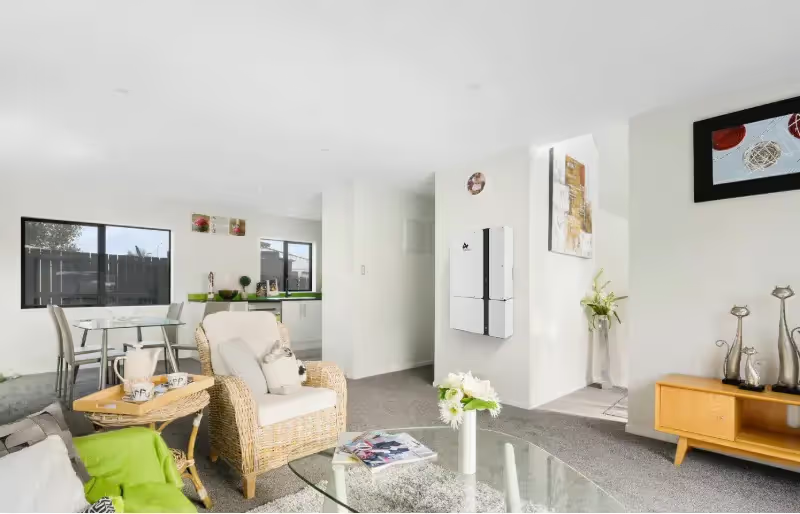
Now you know the installation costs and potential electricity savings by using a solar PV battery, how do you determine if you actually need one?
Self-sufficiency is another popular reason people invest in solar batteries, and we’ll discuss that in the next section.
But, a good way to determine if a solar storage battery is right for you is to analyse the payback period.
You’ll then want to weigh up other factors against the payback period (such as self efficiency and lowering your carbon footprint) to determine which is the right battery size for you.
Using our property example (4,100kWh per annum electricity consumption), we get the following payback period figures:

If your focus here is on getting the shortest payback period, there’s no doubt that buying solar panels without a battery is the way to go.
Use our clickable solar panel and battery tool here. You can easily flick between the different battery options, so you can see exactly what payback period you’d get for your property.
Whilst earning cash from the Smart Export Guarantee is great, it makes much more sense to be energy self-sufficient. And the best way to do this is by having a reasonably sized storage battery.
One thing our payback period calculations above don’t take into account, is the constant fluctuation in energy prices.
As consumers, we accept the fact that bills tend to go one way…up! And that’s highlighted here by Statista, showing wholesale electricity prices over the last decade:
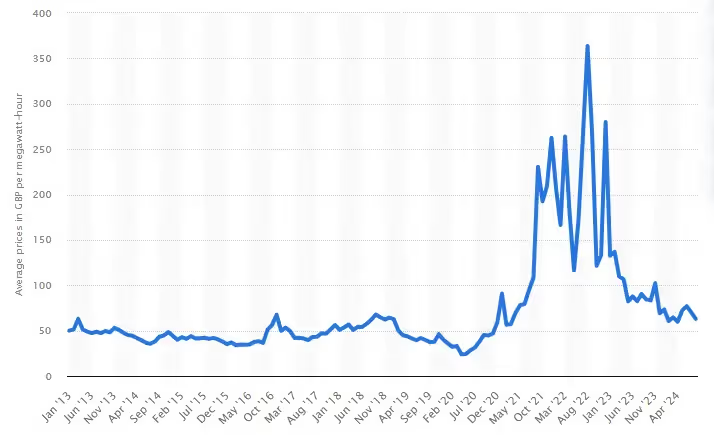
As you can see on that chart, there were periods at 7x the low. Obviously we don’t feel the full force of these fluctuations thanks to energy price caps, but we certainly notice the difference.
If we were to map the payback period and also account for average electricity bill increases year by year, the payback period for solar panels (with a battery) would actually be much less than that of just installing panels.
This makes solar storage batteries worth it for anyone that wants to protect themselves against rising energy costs.
If the rising cost of electricity is a factor in whether or not you want a battery, you need to look at self-sufficiency ratings for each setup. The higher the self sufficiency rating, the more installing a solar battery is going to be worth it.

For the property in question (4,100kwh/yr electricity consumption), the best balance of cost and self sufficiency is with the medium battery, offering 70% self sufficiency.
Use our clickable tool to work out the best balance of price and self sufficiency for your property by clicking here.
Looking for further reading? Check out our guide to if solar panels are worth it, and this one explaining solar storage batteries.
Try our free quote tool. You'll have your personalised quote in under a minute.